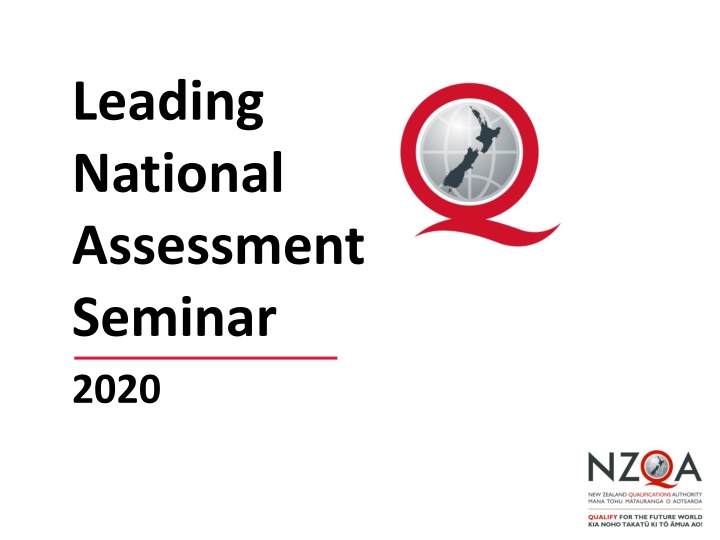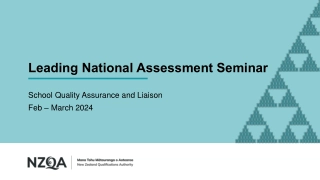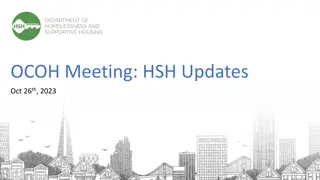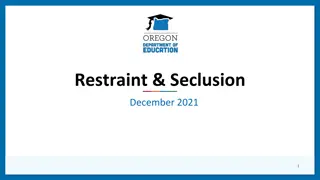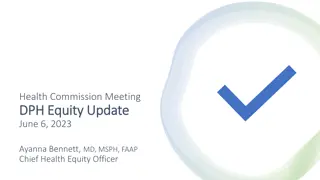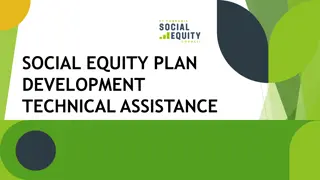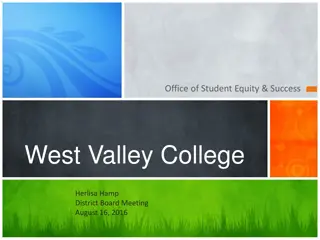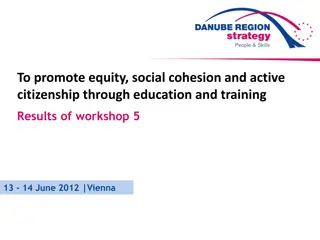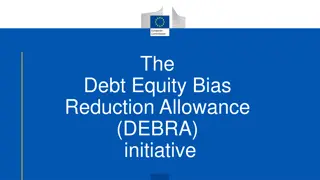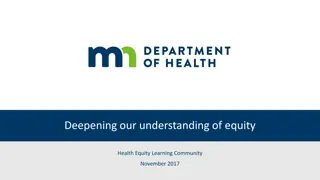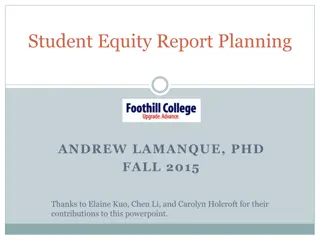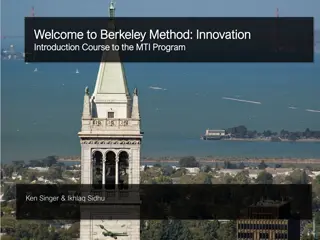Leading National Assessment Seminar 2020: Equity, Quality, and Innovation in Education
Explore the themes of equity, quality, and innovation in education presented at the Leading National Assessment Seminar 2020 by NZQA. The seminar focused on guiding principles to ensure equal opportunities, digital assessment advancements, and strategies for future qualifications. Discover insights on addressing systemic barriers for equitable access and promoting diversity in STEM education. Learn how to monitor progress towards achieving equity in student outcomes through the equity ratio model.
Download Presentation

Please find below an Image/Link to download the presentation.
The content on the website is provided AS IS for your information and personal use only. It may not be sold, licensed, or shared on other websites without obtaining consent from the author.If you encounter any issues during the download, it is possible that the publisher has removed the file from their server.
You are allowed to download the files provided on this website for personal or commercial use, subject to the condition that they are used lawfully. All files are the property of their respective owners.
The content on the website is provided AS IS for your information and personal use only. It may not be sold, licensed, or shared on other websites without obtaining consent from the author.
E N D
Presentation Transcript
Leading National Assessment Seminar 2020
LNA Seminar NZQA Guiding Principles Equity Quality Innovation
LNA Seminar Welcome You can t go back and change the beginning, but you can start where you are and change the ending. - C.S Lewis
LNA Seminar Seminar Programme Equity opportunities: STEM Digital Assessment: NCEA Online 8:45am-10:30am 10:30am-10:50am Morning Tea Examinations Using the right provider code International students 10:50am-12:30pm Qualify for the Future World | Kia noho takatu ki t mua ao
LNA Seminar Equity Equality Equity EQUALITY EQUITY EASY ACCESS It is assumed everyone will benefit from the same support. They are being treated equally. Individuals are given different support to make it possible for them to have equal access to the game. They are being treated equitably. All three individuals can see the game without any supports or accommodations because the cause of the inequity has been addressed. The systemic barrier has been removed. Easy access
Equity This is what you told us - Equity in STEM The Key Influences Relationships Pathways What works: Teachers know student well Engagement with wh nau High expectations of achievement Quality teaching and learning Ethic of care School-wide M ori and Pacific culture inclusion What works: Access to next level courses STEM course planning Reflective analysis of student achievement data by ethnicity, including future goal setting Careers guidance
Equity Reminder of equity ratio Shows the achievement gap between different groups Can be used to monitor progress of your school goals towards equity of achievement Equity Ratio Revisited: The equity ratio is the percentage of successful students in the target group expressed as a percentage of the successful Other Students. For example, for ethnicity: Pacific Student Achievement M ori Student Achievement Other Student Achievement Other Student Achievement
STEM School A
STEM School B
STEM School C
NCEAOnline NZQA s commitment An assessment experience more relevant to: learning needs cultural context, for particularly M ori and Pacific students Digital exams can: help us change the way we assess students provide new ways for students to demonstrate their understanding and knowledge when these exams become the norm
NCEAOnline 2019 in review Compared with 2018 4x Schools 202 3x Students 14395 4x Digital exam sessions 35
NCEAOnline 2020 delivery 23 NCEA exams available digitally New subjects More students doing more subjects Streamlining service delivery and functionality Practice activities, training and support
NCEAOnline 2020 research focus Delivering digital exams without internet Scholarship digital exams More than one digital external assessment per year Supporting equity and inclusion through o trialling text to speech in English, and text to speech and spellcheck in Te Reo M ori o using data, evidence and best practice that supports M ori and Pacific participation Considering using the digital platform to: o assess Mathematics and Statistics, use school SAC software and run practice exams Marking scanned exam papers
NCEAOnline Moving forward NZQA is taking a staged approach to digital exams We suggest a similar approach for schools - Dip a toe in: start where you can build confidence - Add students and subjects each year - Work with NZQA and N4L for support and preparation - Consider your barriers and what could help
NCEAOnline Your story Each school is somewhere on the journey to delivering digital exams What are your school sbarriersand enablers to delivering digital exams? Use the template in your handbook to create a story to share
NCEAOnline Near Star / Far Star Far Star (for NZQA) credible assessment and equitable opportunity for all Near Star - focus for 2020 What are your far and near stars? What are your next steps to get there? How can we help?
Examinations Notification of computer use For candidates requiring only computer use (no other SAC) Wherever possible, enter students in digital exams Notify NZQA via SAC online tool to enable ECM planning School to consider: o resourcing e.g. access to computers, printers, IT set-up o logistics e.g. rooming, supervisors o exam integrity o parental expectations Suggest trial in 2020 to match available school resources
Examinations SAC students entry in digital exams Recommend: use the student s SAC needs analysis to consider the implications involve students in the decision-making to assist their understanding prepare students well e.g. use of digital exam platform and practice activities
Examinations Effective examination preparation Schools: support candidates to develop in-depth understanding of learning to: odemonstrate their knowledge and skills well orespond positively to changes in exam papers ouse exam techniques effectively NZQA: provides resources (exemplars / past papers / assessment schedules) to supplement good teaching uses self review and feedback to improve questions, formats and resources
Examinations Assessment Specifications Reminder: Updated annually for all subjects and levels (end of year/ March / notified in circular) Must be checked every year
Using the right provider code Important because: 3,910,386 internal results reported using school provider code in 2018 Currently Since 2016 5,300 external MOU relationships with consented providers 101 NZQA investigations Most investigations involved use of an unconsented provider code 8.4% of internal results reported using other provider codes (tertiary and school) 113 approved sub-contract arrangements
International students Course approval For courses exclusively or mainly (> 50%) for international students To ensure equitable standard of instruction 2019 4E Education Approval Status Number of schools All courses approved 19 Some courses approved 27 No approval 44 Refer to Circular A2020/1
International students Changed processes 4E Education Now: part of consent: same programme requirements as Consent to Assess (Rule 2.5 i v) one-off brief application stating Consent requirements met annual attestation monitor during SRM school visits and MNA review
International students School responsibilities Schools: pay NCEA and Scholarship fees to NZQA As Code Signatories: monitor to ensure students: met Visa requirements eg attendance, academic progress undertake the educational instruction they are enrolled for meet other obligations under the Code Further information will be sent to schools Refer to Circular A2020/2
